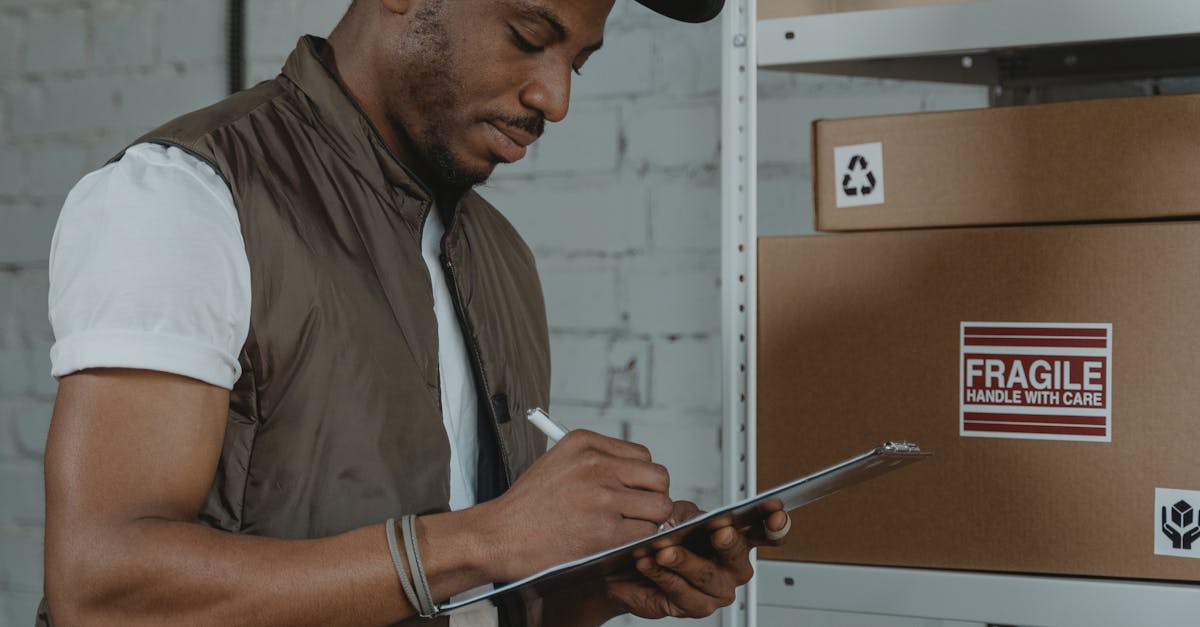
7 Key Benefits of White Glove Logistics for HealthcareSustainability in CloudBased Logistics
Growing concerns about environmental impact have prompted logistics companies to adopt sustainable practices within their operations. Cloud-based solutions enable organisations to optimise their routes, reduce fuel consumption, and lower emissions. By leveraging real-time data analytics, companies can make more informed decisions, contributing to a greener supply chain that aligns with regulatory requirements and consumer expectations.
The adoption of green technologies is becoming increasingly vital in the logistics sector. Cloud platforms facilitate the integration of electric and hybrid vehicles into fleets, promoting energy efficiency. Furthermore, these platforms allow for better collaboration among stakeholders, ensuring that sustainability goals are met while maintaining operational efficiency, ultimately benefiting both the planet and the profitability of logistics businesses.
Implementing EcoFriendly Practices in Supply Chains
The integration of sustainability into supply chains has become crucial for businesses aiming to reduce their environmental footprint. Companies are increasingly examining their sourcing processes, seeking local suppliers to cut down on transportation emissions. Implementing renewable energy sources within warehouses and logistics facilities optimises energy consumption. Adopting a circular economy model also drives businesses to rethink product lifecycles and minimise waste.Maintaining the precision and integrity of sensitive medical equipment is essential in the healthcare sector. White glove logistics provides a tailored approach to handling these items, ensuring each piece is treated with the utmost care. From transp...
Technology plays a vital role in encouraging eco-friendly practices within logistics. Advanced software solutions facilitate better inventory management and route optimisation, leading to more efficient use of resources. Additionally, real-time data analytics allow for tracking emissions and assessing sustainability metrics effectively. Collaborating with partners that prioritise sustainability ensures that companies can enhance their eco-friendly initiatives across the entire supply chain.
Adoption of Blockchain Technology
The rising adoption of blockchain technology is transforming logistics management by providing enhanced security and transparency in transactions. With its decentralised nature, blockchain allows for tamper-proof records of all activities within the supply chain. This is particularly beneficial in reducing fraud while ensuring the integrity of sensitive information. Companies can track products in real time, enabling them to verify authenticity and streamline processes, improving overall trust among stakeholders.More Info
Moreover, the integration of blockchain fosters better collaboration between partners in the supply chain. Smart contracts, built on blockchain, automate and enforce agreements between parties without the need for intermediaries. This minimises operational delays and costs associated with traditional transaction methods. As organisations increasingly seek innovative solutions to complex logistical challenges, the role of blockchain technology in providing efficient, transparent, and secure processes becomes even more significant.
Enhancing Transparency and Security in Transactions
cesses, which ultimately reduces costs and enhances service delivery.
The integration of technology in white glove logistics significantly enhances operational efficiency. Advanced software systems streamline the coordination of deliveries, ensuring timely arrival and meticulous handling of medical equipment. Real-time...Related Links
10 Advantages of Using Cloud-Based Logistics SolutionsHow to Optimise Your Supply Chain with Cloud TechnologyMore Info
Review of the Best Cloud Logistics Software
The Evolution of Cloud-Based Logistics Solutions
Why Cloud-Based Solutions are Essential for Modern Logistics
Why You Should Embrace Cloud Technology in Logistics
What to Consider When Choosing a Cloud Logistics Provider
What are the Benefits of Cloud-Based Logistics SolutionsWhat to Look for in a Healthcare Logistics Partner